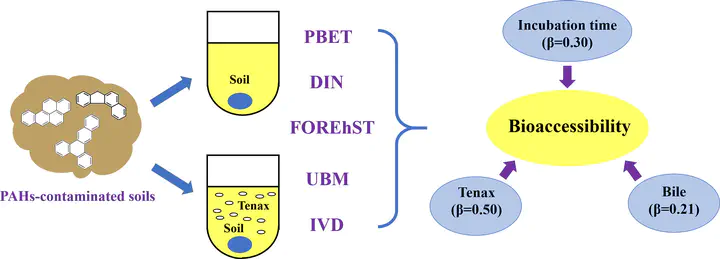Bioaccessibility of PAHs in contaminated soils: Comparison of five in vitro methods with Tenax as a sorption sink

Abstract
For hydrophobic organic contaminants, physiologically based in vitro methods may need to include a sorption sink to simulate in vivo intestinal uptake. We compared PAH bioaccessibility in contaminated soils using five in vitro methods including physiologically based extraction test (PBET), in vitro digestion assay (IVD), method from Deutsches Institut für Normung (DIN), unified bioaccessibility method (UBM), and fed organic estimation human simulation test (FOREhST) in the absence and presence of Tenax as a sorption sink. The PAH bioaccessibility without Tenax were pretty low with values ranging from below detection limit to 13.4%, indicating the limited capacity of these in vitro models to accommodate PAHs. With addition of Tenax, bioaccessibility increased to 0.59–75.5% for all PAH congeners. Even with the dominant effect of sorption sink, bioaccessibility values significantly varied among all the five methods with DIN result being the highest at 7.0–34.8%. Based on multiple linear regression, Tenax, incubation time, and bile contents are identified to be the most important factors in controlling bioaccessibility. The understanding of these key factors for bioaccessibility is highly necessary to standardize in vitro methods, which helps to refine the assessment of health risk through exposure to ingested contaminants.